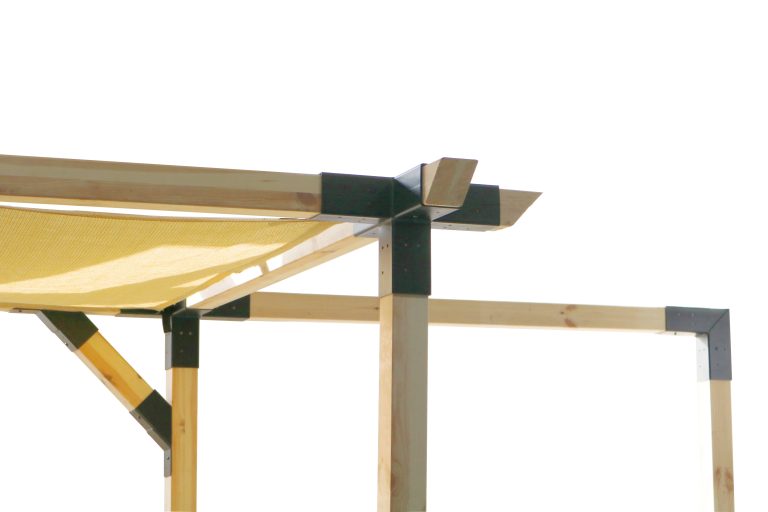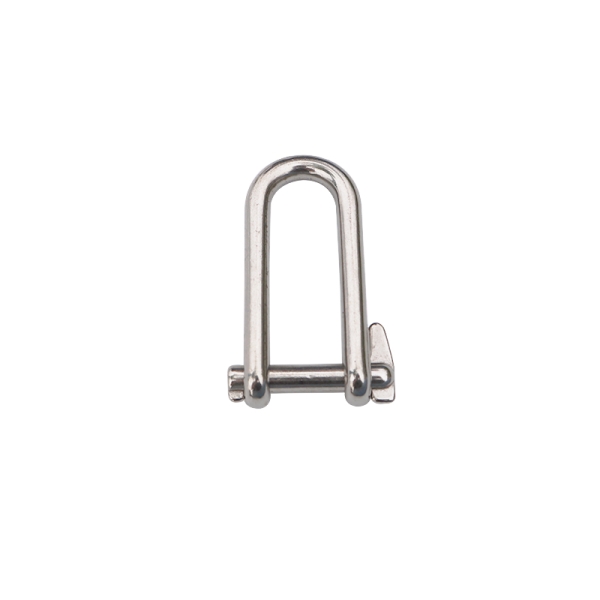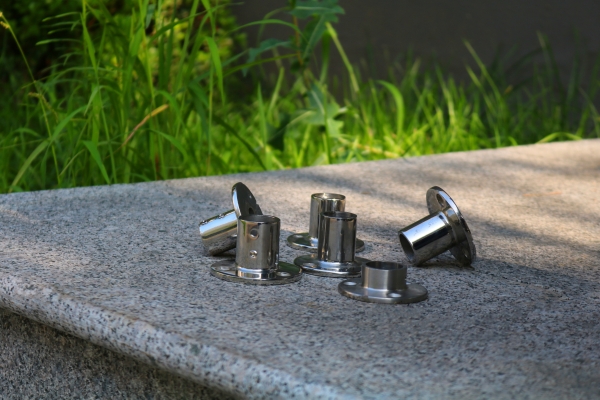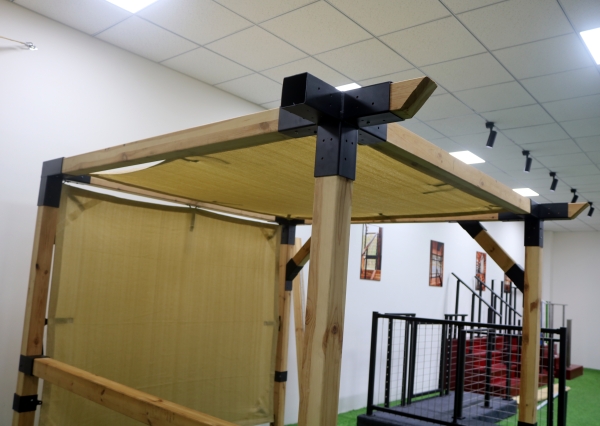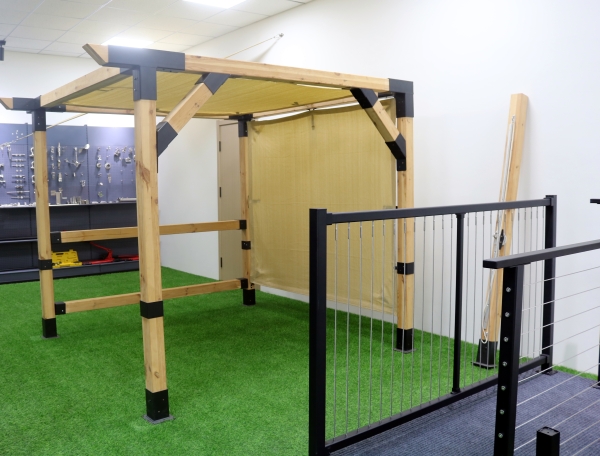Table of Contents
أنواع الأخشاب المناسبة للبرجولات
بالإضافة إلى المتانة ومقاومة الطقس، من المهم أيضًا مراعاة قوة الخشب عند اختيار المواد للعريشة الخاصة بك. يجب أن يكون الخشب الذي تختاره قادرًا على تحمل وزن الهيكل وأي ميزات إضافية، مثل الكروم أو النباتات المعلقة. يعد كل من خشب الأرز والخشب الأحمر من الأخشاب القوية القادرة على تحمل وزن العريشة، بينما قد يتطلب الصنوبر المعالج بالضغط دعمًا إضافيًا للهياكل الأكبر حجمًا.
في الختام، عند اختيار الأخشاب لمشروع العريشة الخاص بك، من المهم مراعاة العوامل. مثل المتانة والقوة والجماليات. يعتبر خشب الأرز والخشب الأحمر والصنوبر المعالج بالضغط كلها خيارات مناسبة للبرجولات، ولكل منها مزاياه واعتباراته الخاصة. من خلال الأخذ في الاعتبار الظروف المناخية والطقس في منطقتك، بالإضافة إلى المتطلبات المحددة لمشروعك، يمكنك اختيار أفضل الأخشاب للعريشة الخاصة بك وضمان هيكل خارجي ناجح وطويل الأمد.
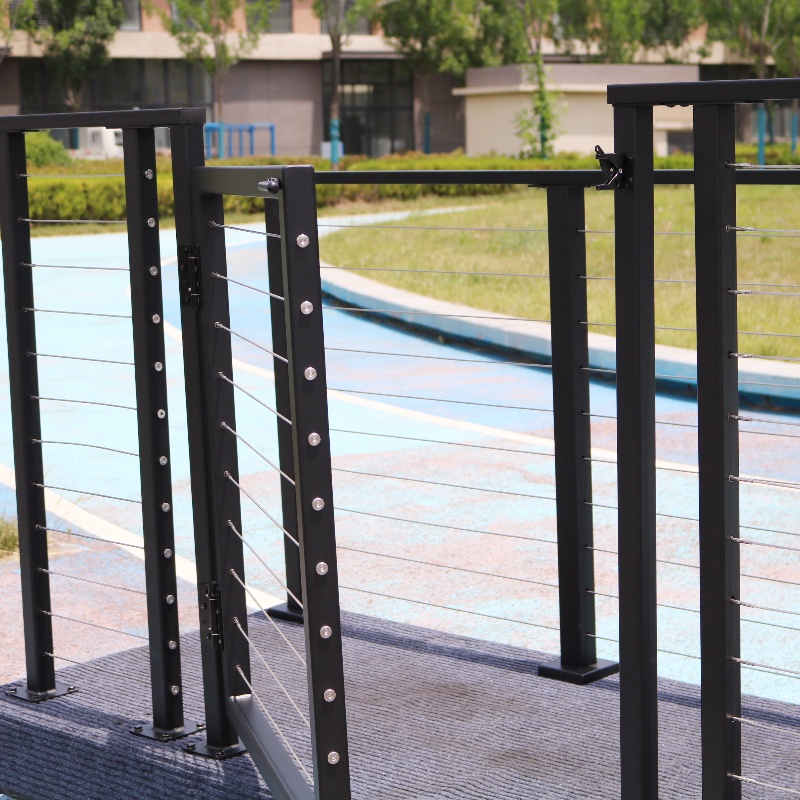
العوامل التي يجب مراعاتها عند اختيار الأخشاب للبرجولات
عند الشروع في مشروع العريشة، أحد أهم القرارات التي يتعين عليك اتخاذها هو اختيار الأخشاب المناسبة لهذه المهمة. لن يؤثر نوع الخشب الذي تختاره على جماليات العريشة فحسب، بل سيؤثر أيضًا على متانتها وطول عمرها. هناك عدة عوامل يجب مراعاتها عند اختيار الأخشاب للعريشة، بما في ذلك نوع الأخشاب ومتانتها واستدامتها.
أحد العوامل الأولى التي يجب مراعاتها عند اختيار الأخشاب للعريشة هو نوع الأخشاب. تتميز الأنواع المختلفة من الأخشاب بخصائص مختلفة يمكن أن تؤثر على أداء العريشة الخاصة بك. بعض أنواع الأخشاب، مثل خشب الأرز والخشب الأحمر، مقاومة بشكل طبيعي للتعفن والتحلل، مما يجعلها اختيارات مثالية للهياكل الخارجية مثل البرجولات. الأنواع الأخرى، مثل الصنوبر والتنوب، أكثر عرضة للتعفن والتعفن وقد تتطلب معالجة إضافية لحمايتها من العناصر.
بالإضافة إلى أنواع الأخشاب، من المهم مراعاة متانة الأخشاب التي تختارها. . المتانة هي مقياس لمدى قدرة أنواع الأخشاب على تحمل التعرض للعناصر دون أن تتدهور. بعض أنواع الأخشاب، مثل خشب الساج وخشب الآيب، معروفة بمتانتها الاستثنائية ويمكن أن تستمر لعقود دون الحاجة إلى الاستبدال. الأنواع الأخرى، مثل الصنوبر والتنوب، أقل متانة وقد تتطلب صيانة متكررة لإبقائها في حالة جيدة.
هناك عامل مهم آخر يجب مراعاته عند اختيار الأخشاب للعريشة الخاصة بك وهو الاستدامة. الأخشاب المستدامة هي الأخشاب التي يتم حصادها بطريقة تقلل من تأثيرها على البيئة. ابحث عن الأخشاب المعتمدة من قبل منظمات مثل مجلس رعاية الغابات (FSC) أو مبادرة الغابات المستدامة (SFI) لضمان حصادها بطريقة مسؤولة. إن اختيار الأخشاب المستدامة لمشروع العريشة الخاص بك لا يساعد على حماية البيئة فحسب، بل يضمن أيضًا بناء العريشة الخاصة بك لتدوم طويلاً.
عند اختيار الأخشاب للعريشة الخاصة بك، من المهم أيضًا مراعاة حجم الخشب وشكله. تكون الأخشاب الأكبر حجمًا بشكل عام أكثر استقرارًا ومتانة من الأخشاب الأصغر حجمًا، مما يجعلها خيارًا أفضل للعناصر الهيكلية للعريشة الخاصة بك. بالإضافة إلى ذلك، يمكن أن يؤثر شكل الخشب على قوته وثباته. ابحث عن الأخشاب المستقيمة والخالية من العقد، لأن هذه الخصائص يمكن أن تضعف الخشب وتقلل من عمره الافتراضي.
في الختام، يعد اختيار الأخشاب المناسبة لمشروع العريشة الخاص بك أمرًا ضروريًا لضمان أن العريشة الخاصة بك ليست فقط جذابة من الناحية الجمالية ولكن أيضًا متينة وطويلة الأمد. ضع في اعتبارك عوامل مثل نوع الأخشاب ومتانتها واستدامتها عند اختيار الأخشاب للعريشة الخاصة بك. من خلال اختيار أنواع الأخشاب المستدامة والمتينة والمناسبة تمامًا للاستخدام الخارجي، يمكنك إنشاء عريشة من شأنها تحسين مساحتك الخارجية لسنوات قادمة.
When embarking on a pergola project, one of the most important decisions you will need to make is selecting the right timber for the job. The type of timber you choose will not only affect the aesthetics of your pergola but also its durability and longevity. There are several factors to consider when selecting timber for pergolas, including the species of timber, its durability, and its sustainability.
One of the first factors to consider when choosing timber for your pergola is the species of timber. Different species of timber have different characteristics that can affect the performance of your pergola. Some species of timber, such as cedar and redwood, are naturally resistant to rot and decay, making them ideal choices for outdoor structures like pergolas. Other species, such as pine and spruce, are more prone to rot and decay and may require additional treatment to protect them from the elements.
In addition to the species of timber, it is important to consider the durability of the timber you choose. Durability is a measure of how well a timber species can withstand exposure to the elements without deteriorating. Some timber species, such as teak and ipe, are known for their exceptional durability and can last for decades without needing to be replaced. Other species, such as pine and spruce, are less durable and may require more frequent maintenance to keep them in good condition.
Another important factor to consider when selecting timber for your pergola is sustainability. Sustainable timber is timber that is harvested in a way that minimizes its impact on the environment. Look for timber that is certified by organizations such as the Forest Stewardship Council (FSC) or the Sustainable Forestry Initiative (SFI) to ensure that it has been harvested responsibly. Choosing sustainable timber for your pergola project not only helps protect the environment but also ensures that your pergola will be built to last.
When selecting timber for your pergola, it is also important to consider the size and shape of the timber. Larger timbers are generally more stable and durable than smaller timbers, making them a better choice for structural elements of your pergola. Additionally, the shape of the timber can affect its strength and stability. Look for timbers that are straight and free of knots, as these characteristics can weaken the timber and reduce its lifespan.
In conclusion, choosing the right timber for your pergola project is essential to ensuring that your pergola is not only aesthetically pleasing but also durable and long-lasting. Consider factors such as the species of timber, its durability, and its sustainability when selecting timber for your pergola. By choosing sustainable, durable timber species that are well-suited to outdoor use, you can create a pergola that will enhance your outdoor space for years to come.

